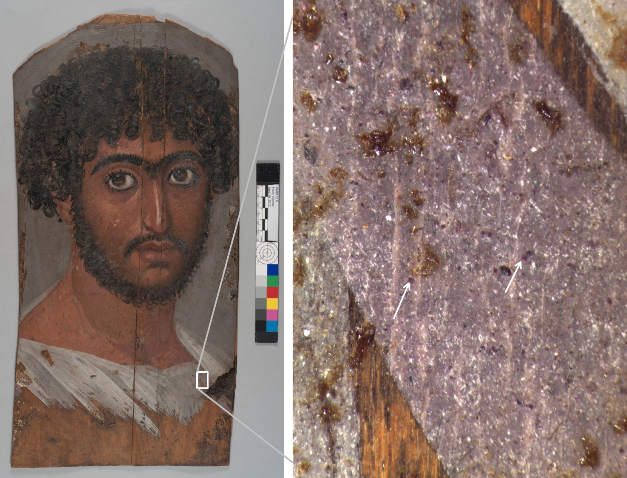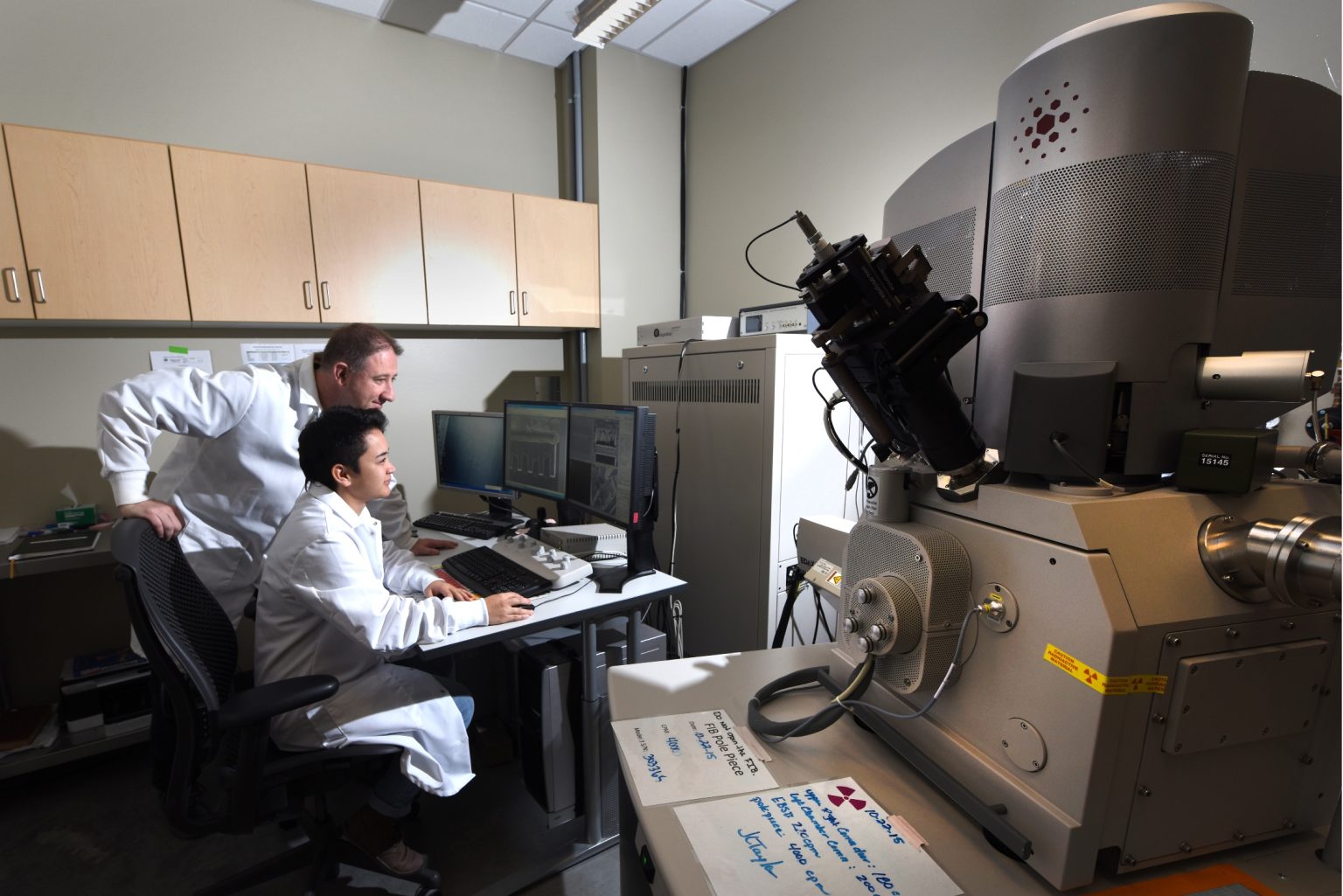Although the Center for Advanced Energy Studies (CAES) is considered a forward-looking research institution, a team there is working to unlock the mysteries of an Egyptian artifact from the second century CE.
With equipment valued at more than $3.5 million — including a high resolution transmission electron microscope and an atom probe — Dr. Darryl Butt of Boise State University and CAES researchers Yaqaio Wu and Jatu Burns examined a tiny speck of purple pigment from a sarcophagus portrait to determine who the man inside might have been — or wanted to be.
The portrait, “Bearded Man, 170-180 A.D.,” belongs to the Walters Art Museum of Baltimore, Md., and is part of a project, titled APPEAR (Ancient Panel Paintings-Examination, Analysis, Research), a collaboration between 12 museums, including the British Museum in London.

Why is CAES, a research consortium between Idaho National Laboratory, Idaho’s three public research universities and the University of Wyoming, using its equipment on antiquities?
Although he has worked on everything from carbon sequestration to gas separation membranes, Butt has a passion for antiquities and trans-disciplinary projects. He has been interested in solving art mysteries since he was young, and at a conference at Stanford University discovered a like-minded colleague in Glenn Gates, the Walters Art Museum’s conservation scientist.
Both are officers of the American Ceramic Society’s new art, archaeology and conservation science division.
“This research was a gamble that we (materials scientists) could do some really cool stuff,” Butt said. “It highlights some of the amazing tools that we have at Boise State and at CAES that could shed new light on problems associated with understanding human history.”
Transmission electron microscopy is a powerful analysis method in physical and biological sciences, including cancer research, virology, nanotechnology, and semiconductor research, but Butt said that most museums and conservation departments can’t afford it.
“You can literally machine a sample at atomic scale,” he said. “The atoms sputter off the tip, and it provides a 3-D map of the atomic density of the material.”

In the case of the man on the sarcophagus, getting a read on how the paint was made offered insight about who he actually was and what he hoped for himself. What stood out most to the CAES/BSU researchers was the purple clavi, a trace swath in the portrait that indicated the “Bearded Man” was of high stature or that he had aspirations.
The phrase “to the purple born” dates back to ancient times, when purple-dyed textiles denoted status and their production was tightly controlled. Often called “Tyrian purple,” the color was worn by such legendary figures as Cleopatra. The pigmentation was created with dye from carnivorous sea snails called murex.
The samples from the sarcophagus portrait came from a wood sliver thinner than a human hair. Transferring the fragment to the sample holder proved to be the greatest challenge. Once that was accomplished, the CAES/BSU researchers were able to extract five 20-nanometer fragments — smaller than the point of a needle — and two thin foils. Then they had what they needed to analyze the chemistry, constructing three-dimensional portraits.
Researchers discovered that the paint was not made from snail secretions but a synthetic pigment, possibly heated in a crucible made of lead. Nanoscale analysis suggested the hue may have been created by using a metal salt to shift a red organic material extracted from the kermes insect or the madder plant root. Butt’s research group is trying to prove this, by reproducing ancient Egyptian dye and pigment making techniques in his laboratory.

Students in the BSU College of Innovation and Design’s VIP: Science of Art program are reverse engineering the process. They ground raw materials into a powder with mortar and pestle, steeped them in a water bath to release the pigments, then added mordants, metal salts, and/or alkali salts to induce color change.
They presented their results at the 2015 Undergraduate Research and Scholarship Conference. Students also presented the work at an American Association for the Advancement of Science (AAAS) meeting in San Francisco last year. Also, presentations on the work are being planned for this fall. “We’re hoping to publish a paper on this soon,” Butt said. “We’re still working out the details, but have made lots of purple stuff.”
Butt said he hopes these kinds of trans-disciplinary projects will open up new research opportunities, including, perhaps, a “pipeline” of students who travel to various user facilities or museums to carry out interdisciplinary research.
“Envision, for example, art students studying works of art using synchrotron radiation and bright x-rays at a national laboratory, while science and engineering students use their technical skills to unravel mysteries of materials used by ancient societies in the field or held by museums,” Butt said.
At CAES, Butt is proposing to use the LEAP to study old daguerrotype photographs, mapping out particles below wavelength light at nanometer scale. Other projects involve analyzing the ink Herman Melville used writing marginalia and examining oil paintings done on copper from the 17th and 18th centuries.
Butt’s dream project? “A fleck of pigment from DaVinci’s ‘The Last Supper’ or a mural in the Sistine Chapel,” he said.





